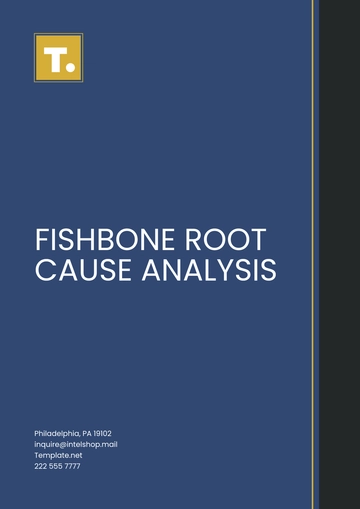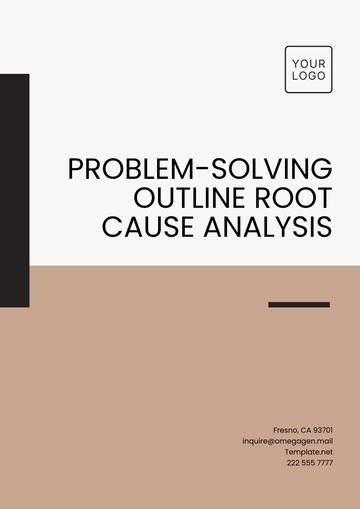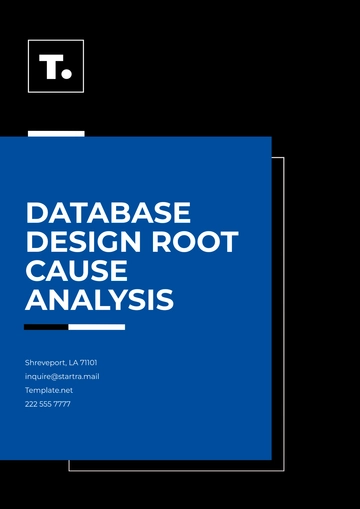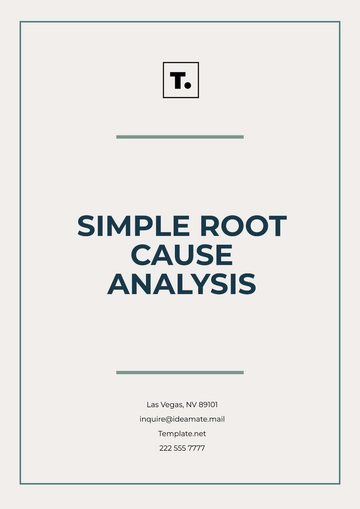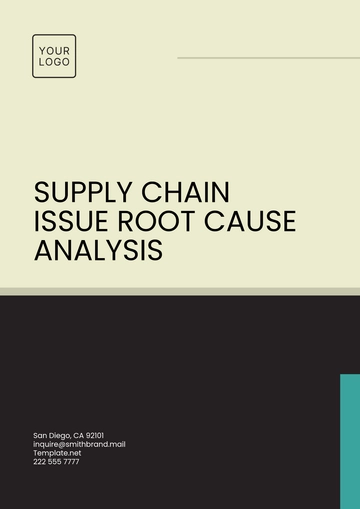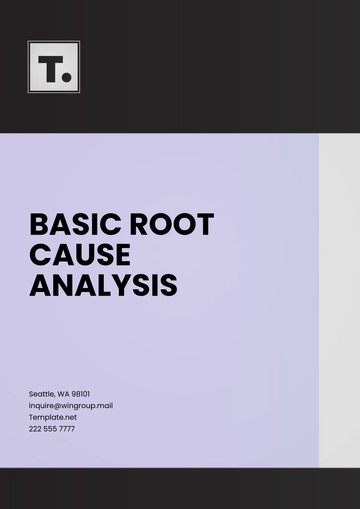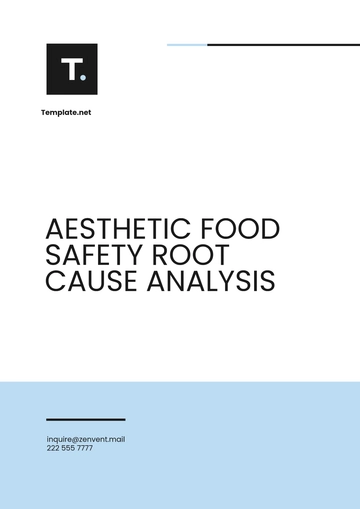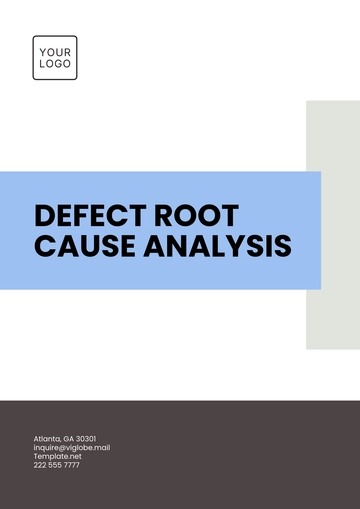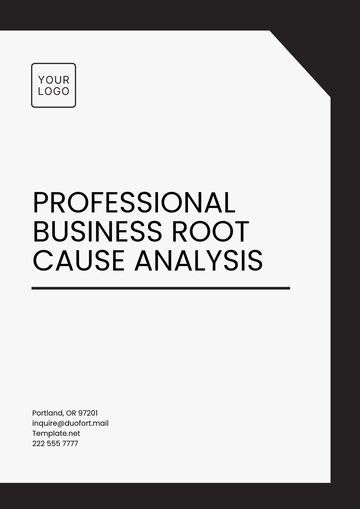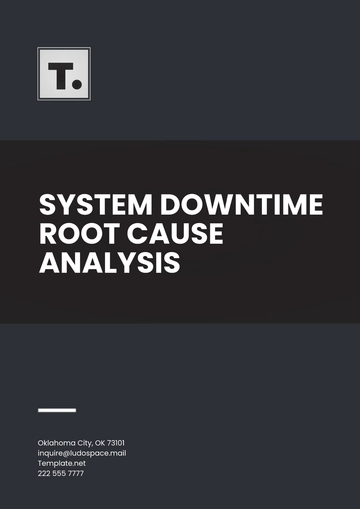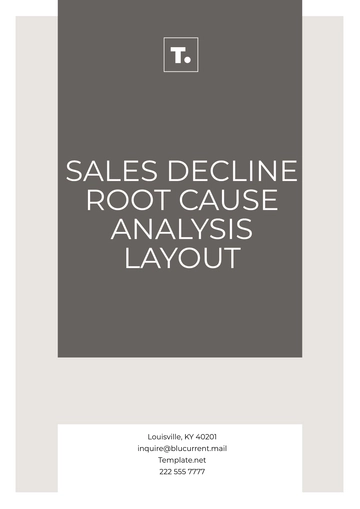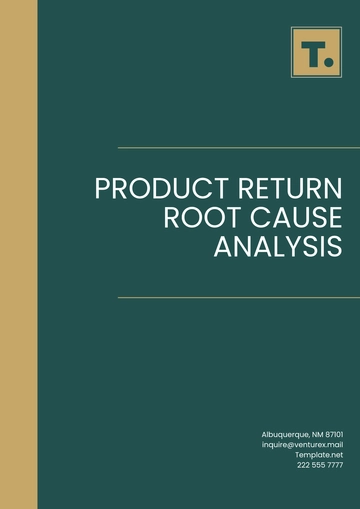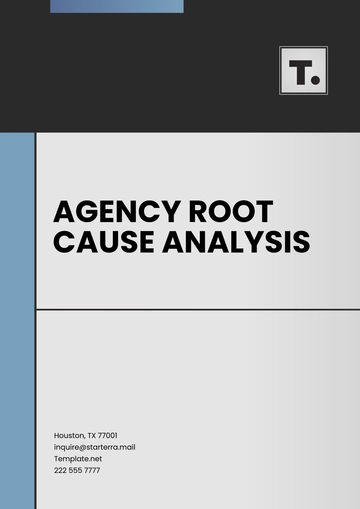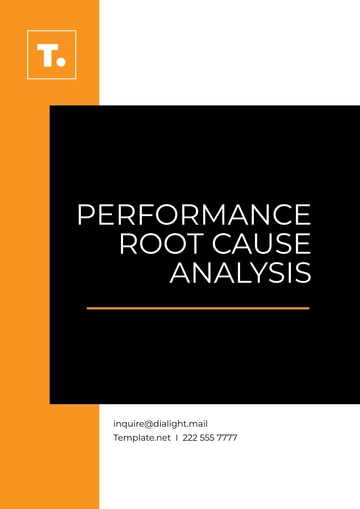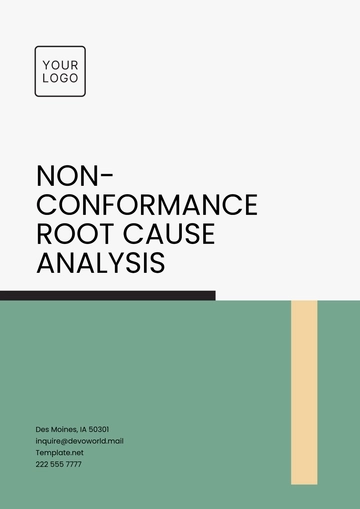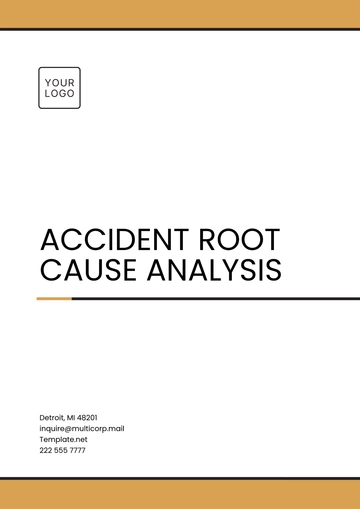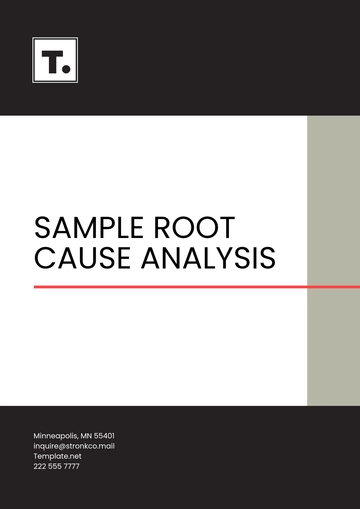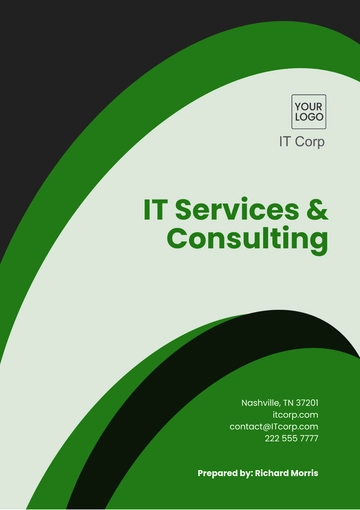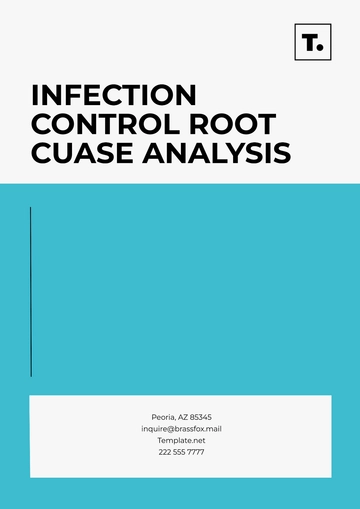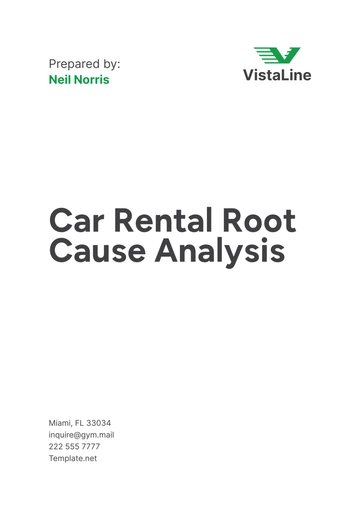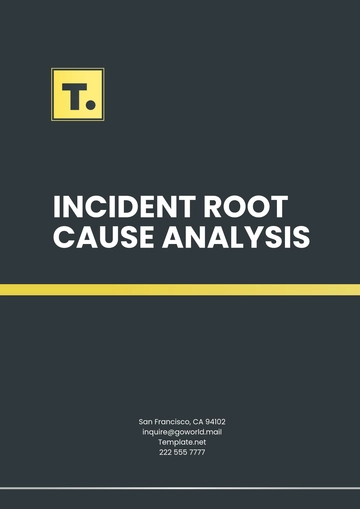Free Startup Workflow Analysis Report
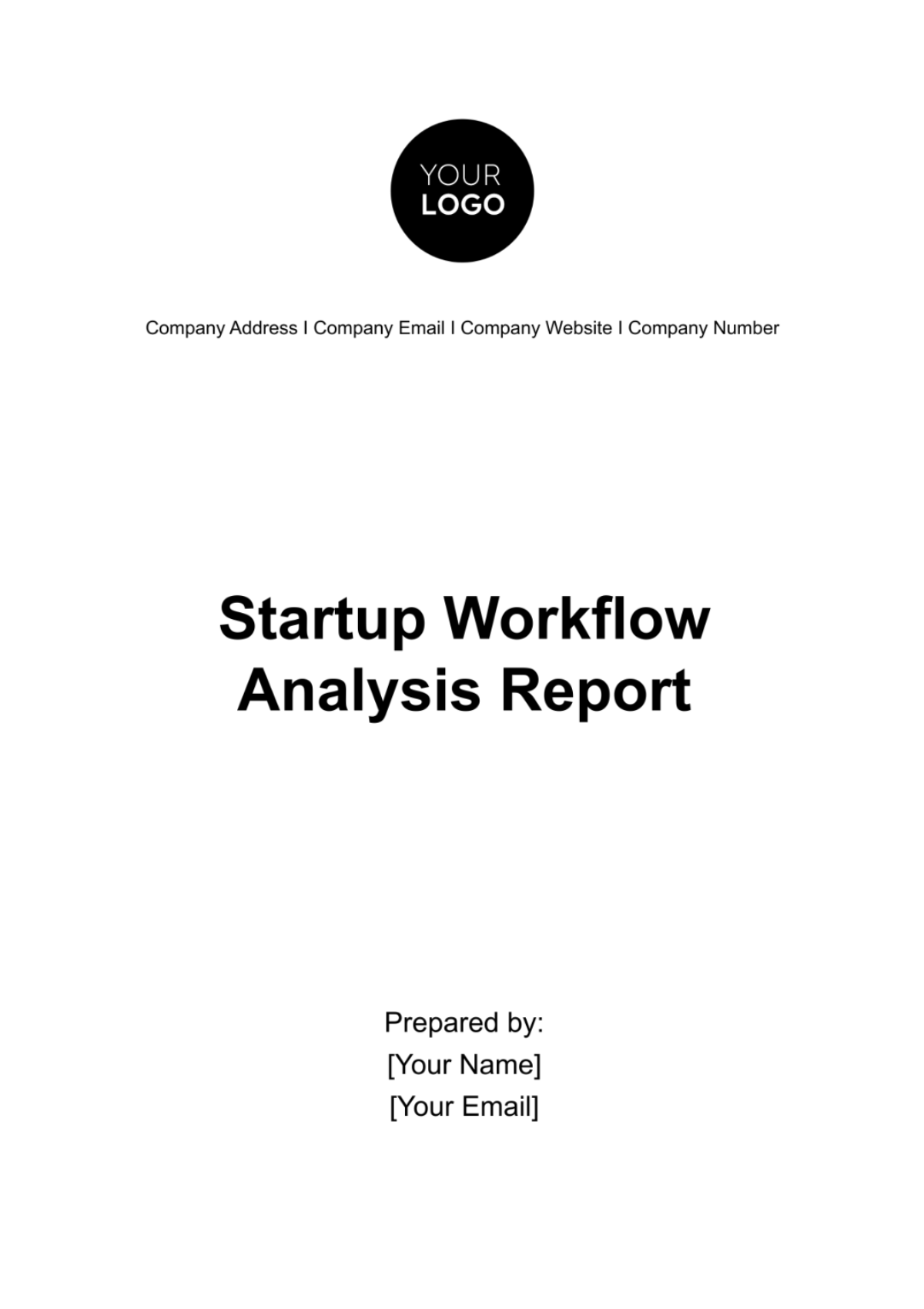
I. Executive Summary
This report extensively examines the startup's workflow, pinpointing inefficiencies, and proposing strategic enhancements. Through a detailed analysis of critical processes and roles, the evaluation encompasses five key areas: workflow efficiency, team productivity, automation opportunities, process bottlenecks, and workflow consistency. While efficiency and team productivity scores stand at a good score, suggesting a solid foundation, opportunities for refinement are identified. Automation potential and process bottlenecks indicate areas for technological evolution and resource management optimization. Recommendations span streamlining processes, fostering a culture of continuous improvement, enhancing team dynamics, leveraging automation, and reinforcing workflow consistency. The proposed strategic implementation aims at transformative improvements, fostering streamlined workflows, heightened employee satisfaction, and sustained growth, positioning the startup for excellence in its industry.
II. Key Areas and Methods
A. Workflow Efficiency
In assessing workflow efficiency, our analysis method involves a comprehensive examination of the startup's critical processes. By scrutinizing the sequence of tasks and their interdependencies, we identify potential areas of improvement. This includes evaluating the time taken for each task, resource utilization, and the alignment of processes with organizational goals. Through this in-depth analysis, we aim to provide strategic recommendations for optimizing the workflow and enhancing overall efficiency.
B. Team Productivity
Team productivity is evaluated through a meticulous analysis of collaborative dynamics and individual contributions. We employ methods such as surveys, interviews, and performance metrics to gauge the effectiveness of team interactions. This multifaceted approach enables us to identify strengths, weaknesses, and opportunities for improvement within the team structure. By understanding the factors influencing productivity, we can tailor recommendations to foster a collaborative environment that maximizes individual and collective output.
C. Automation Opportunities
Identifying opportunities for automation involves a thorough examination of existing processes susceptible to technological integration. Our analysis includes assessing repetitive tasks, manual interventions, and the potential for implementing advanced technologies. Through this evaluation, we aim to streamline operations, reduce manual workload, and enhance accuracy. Recommendations in this area will focus on leveraging automation to improve overall efficiency and elevate the startup's technological capabilities.
D. Process Bottlenecks
Our analysis of process bottlenecks involves mapping out the entire workflow to pinpoint areas causing delays or inefficiencies. By employing techniques such as process flowcharts and time-motion studies, we identify critical points where processes may experience congestion. Understanding the root causes enables us to propose targeted interventions to alleviate bottlenecks and optimize the overall flow of work.
E. Workflow Consistency
Ensuring consistency in workflow execution is assessed through an examination of standardized procedures and adherence to established protocols. Methods include audits, observation, and feedback from team members. We aim to identify deviations from standardized processes and evaluate their impact on overall consistency. Recommendations will focus on reinforcing adherence to established procedures and introducing measures to maintain consistency across different stages of the workflow.
III. Key Findings
Now, we will delve into the outcomes of our analysis on the current startup workflow. The following table encapsulates crucial insights into various areas, providing an overview of the existing workflow's performance:
Areas | Current Status |
|---|---|
Workflow Efficiency | 76% |
Team Productivity | 70% |
Automation Opportunities | Few |
Workflow Bottlenecks | Resource Allocation |
Workflow Consistency | Adequate |
A. Workflow Efficiency
The laudable 76% efficiency rating is a testament to a solid operational foundation, signifying that critical processes are executing effectively. Yet, this metric unveils latent potentials for refinement. Our recommendations will embark on a granular exploration of specific processes, emphasizing not only streamlining and optimization but also fostering a culture of continuous improvement to push the boundaries of efficiency even further.
B. Team Productivity
A team productivity score of 70% suggests a generally effective team dynamic but unveils specific areas primed for enhancement. This may involve cultivating more robust communication channels, fine-tuning collaborative strategies, or judiciously allocating additional resources where necessary. Our recommendations will intricately weave into the fabric of existing strengths, addressing identified challenges with a strategic intent to augment overall team productivity.
C. Automation Opportunities
The recognition of "Few" automation opportunities unveils a prospect for technological evolution, albeit with room for expansion. Further exploration into automation has the potential to unlock efficiencies, reducing manual workload and elevating operational speed. Recommendations will meticulously identify specific processes well-suited for automation, propelling the startup into a realm of heightened technological adeptness and future-proofing its operations.
D. Workflow Bottlenecks
Identifying resource allocation as a bottleneck underscores the paramount importance of strategic resource management. This bottleneck may manifest in uneven workloads or underutilized resources. Our recommendations will unfold as a strategic recalibration of resource allocation, aiming not only to balance workloads and minimize bottlenecks but also to optimize the overall workflow efficiency by aligning resources with organizational objectives.
E. Workflow Consistency
An "Adequate" rating for workflow consistency delineates a baseline adherence to standardized procedures. While the startup maintains a consistent stride, there lies an opportunity for refinement. Recommendations will intricately focus on reinforcing the foundations of established processes and introducing targeted measures to enhance consistency across various stages of the workflow. This approach aims to foster predictability and sustainability, ensuring that consistency becomes a cornerstone for future growth.
IV. Conclusions
In synthesis, our comprehensive examination of the startup's workflow illuminates a multifaceted operational landscape. The identification of bottlenecks in resource allocation underscores the strategic imperative of optimizing overall efficiency, guiding recommendations for a meticulous recalibration. The commendable efficiency rating signifies a robust operational foundation, prompting a targeted approach to streamline and optimize specific processes further. Team productivity, while effective, presents opportunities for refinement through improved communication channels and resource allocation adjustments. Recognition of automation opportunities unveils a potential technological growth area, with recommendations pinpointing processes ready for automation. The rating for workflow consistency suggests adherence to procedures, prompting recommendations to reinforce established processes for enhanced predictability and sustainability. In conclusion, equipped with these insights and strategic recommendations, the startup is poised for a transformative journey towards heightened operational efficiency, streamlined workflows, and sustained growth in a dynamic business landscape.
V. Recommendations
A. Resource Allocation Optimization
Strategic Realignment
Conduct a thorough assessment of current resource allocation practices.
Align resource allocation with short-term and long-term organizational objectives.
Implement a strategic realignment plan based on the assessment findings.
Workload Balancing
Identify and address areas of uneven workloads among team members.
Develop a systematic approach to distribute tasks, ensuring optimal workload balancing.
Utilize feedback mechanisms to continuously monitor and adjust workload distribution.
Resource Monitoring System
Establish a resource monitoring system to track resource utilization.
Implement regular reviews to ensure ongoing alignment with organizational goals.
Introduce a feedback loop for teams to provide insights into resource needs.
B. Process Streamlining and Optimization
Critical Process Focus
Conduct a detailed analysis of critical processes within the workflow.
Identify dependencies and streamline workflows to eliminate redundancies.
Implement optimization measures to enhance the efficiency of critical processes.
Continuous Improvement Culture
Instill a culture of continuous improvement through training and workshops.
Encourage employees to contribute innovative ideas for process optimization.
Establish a feedback mechanism to incorporate employee suggestions into improvement initiatives.
C. Team Productivity Enhancement
Communication Strengthening
Implement communication training programs to enhance interpersonal skills.
Establish clear communication channels to facilitate efficient information flow.
Foster an environment where team members feel comfortable expressing ideas and concerns.
Resource Allocation Adjustment
Conduct a comprehensive resource audit to identify areas for adjustment.
Optimize resource allocation based on individual and team needs.
Regularly assess and adjust resource allocation to accommodate changing project demands.
Skill Development Initiatives:
Identify skills gaps within the team through regular assessments.
Implement targeted skill development initiatives to enhance team capabilities.
Encourage cross-functional training to build a versatile and skilled workforce.
Performance Recognition Program:
Establish a performance recognition program to acknowledge and reward productivity.
Regularly evaluate team performance against predefined metrics.
Introduce incentives to motivate teams to achieve and exceed productivity goals.
D. Strategic Automation Integration
Identifying Automation Opportunities
Collaborate with relevant departments to identify processes ready for automation.
Prioritize automation based on potential efficiency gains and impact on workflow.
Develop a phased plan for the integration of automation technologies.
Technology Leveraging
Invest in cutting-edge technologies that align with the startup's strategic goals.
Leverage technology to enhance operational speed, accuracy, and overall efficiency.
Establish a technology adoption strategy that ensures seamless integration with existing processes.
E. Reinforcement of Workflow Consistency
Establishing Standardized Procedures
Document and standardize key procedures within the workflow.
Implement training programs to ensure employees are familiar with standardized procedures.
Regularly review and update standardized procedures to reflect evolving business needs.
Consistency Enhancement Measures
Introduce measures to enhance consistency in decision-making processes.
Implement periodic audits to ensure adherence to established procedures.
Foster a culture of accountability to maintain consistency across various stages of the workflow.
VI. Future Implications
Embarking on the implementation of the recommendations outlined in this report is a pivotal step toward transformative improvements in the startup's operational efficiency and productivity. By diligently executing the proposed strategies, the organization anticipates streamlined workflows, reduced redundancies, and heightened operational speed, positioning itself for notable growth. Beyond operational enhancements, the optimized workflows are expected to foster a work environment conducive to employee satisfaction, promoting engagement and motivation. This employee-centric approach aligns with the startup's vision for sustained success. Moreover, the ripple effect extends to increased revenue streams, as strategic optimization not only leads to cost savings but also creates avenues for strategic revenue generation. Despite its startup status, [Your Company Name] holds the potential to excel in its industry, with the key to rapid growth lying in the strategic alignment of workflows with the company's long-term vision, ensuring a trajectory toward success and prominence.
- 100% Customizable, free editor
- Access 1 Million+ Templates, photo’s & graphics
- Download or share as a template
- Click and replace photos, graphics, text, backgrounds
- Resize, crop, AI write & more
- Access advanced editor
Enhancing workflow efficiency has never been this easy with the editable Startup Workflow Analysis Report Template on Template.net This customizable report provides a tailored approach to analyzing and optimizing workflows. Utilize our intuitive and user-friendly AI Editor Tool to streamline your startup's processes and boost productivity! Try it out today!
